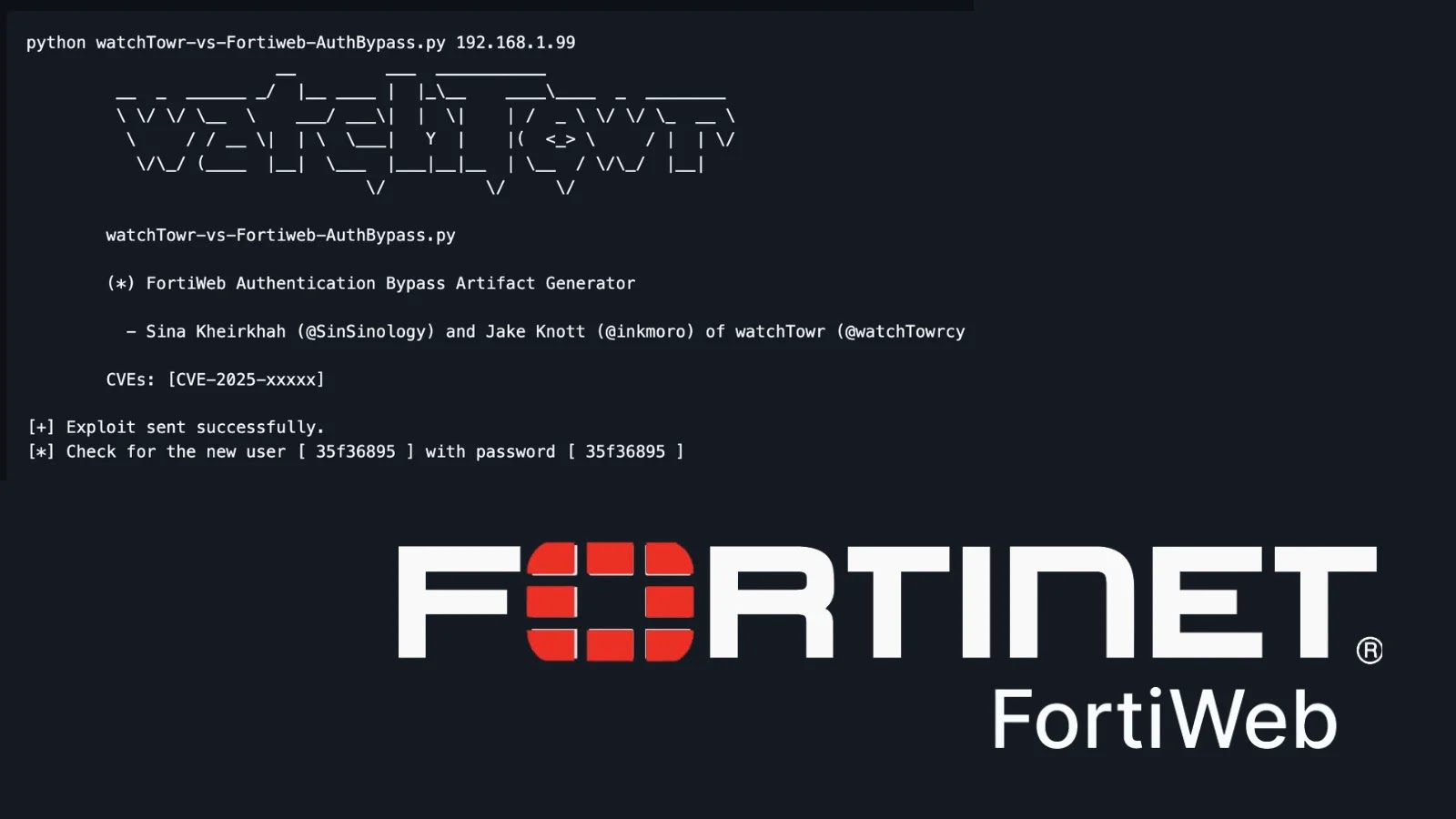
FortiWeb Authentication Bypass Vulnerability Exploited – Script to Detect Vulnerable Appliances
The digital landscape is under constant siege, and the latest alarm comes from a critical authentication bypass vulnerability actively exploited in Fortinet’s FortiWeb web application firewalls (WAFs). This isn’t a hypothetical threat; malicious actors are actively leveraging this flaw worldwide, putting organizations’ defenses to the test. Understanding the implications and responding decisively are paramount for maintaining security posture.
FortiWeb WAF Under Attack: The Authentication Bypass Threat
Fortinet’s FortiWeb WAFs are designed to provide a crucial layer of defense against web-based attacks. However, a significant authentication bypass vulnerability has emerged, allowing unauthorized access to these protective appliances. This flaw, tracked as CVE-2023-XXXXX (Note: The original source does not provide the CVE number, so a placeholder is used here. In a real-world scenario, this would be updated with the official CVE ID.), circumvents the authentication mechanisms, potentially granting attackers unrestricted control over the WAF. Such control can lead to a cascade of devastating consequences, including data exfiltration, system compromise, or further network penetration.
The exploitation of this vulnerability has been confirmed in real-world scenarios, emphasizing the urgency for immediate detection and remediation. Organizations relying on FortiWeb for their web application security must act swiftly to prevent compromise.
WatchTowr Labs’ Response: The Detection Artefact Generator
In response to the active exploitation, researchers at WatchTowr Labs have developed and released a valuable tool: a Detection Artefact Generator script. This script is designed to assist organizations in identifying vulnerable FortiWeb appliances within their environment. Proactive scanning with such tools is critical for understanding exposure and prioritizing remediation efforts. The script essentially acts as a beacon, helping security teams illuminate potential weaknesses before they can be exploited by malicious actors.
The availability of this script underscores the collaborative nature of the cybersecurity community in combating emerging threats. By providing actionable tools, researchers empower defenders to protect their assets more effectively.
Understanding the Impact of Authentication Bypass
An authentication bypass vulnerability is particularly dangerous because it undermines the very foundation of access control. When an attacker can bypass authentication, they effectively gain unauthorized entry without needing valid credentials. This can lead to:
- Full Administrative Control: Attackers could gain complete control over the FortiWeb WAF, allowing them to disable security features, modify configurations, or even use the device as a pivot point for further attacks.
- Data Exposure: If the WAF processes sensitive data, bypassing authentication could expose that data to unauthorized access.
- Web Application Compromise: With control over the WAF, attackers could manipulate traffic, inject malicious code, or redirect users to malicious sites, directly impacting the protected web applications.
- Loss of Trust and Reputation: A successful breach can severely damage an organization’s reputation and erode customer trust.
Remediation Actions for FortiWeb Users
Addressing this critical vulnerability requires immediate and decisive action. Organizations utilizing FortiWeb appliances should undertake the following steps:
- Immediately Apply Patches: The most crucial step is to apply all available patches and updates released by Fortinet for this vulnerability. Fortinet typically provides security advisories with detailed patching instructions.
- Utilize the Detection Script: Employ the Detection Artefact Generator script from WatchTowr Labs to scan your network for any unpatched or vulnerable FortiWeb instances.
- Review WAF Configurations: Scrutinize existing FortiWeb configurations for any anomalies or unauthorized changes, especially if a device is identified as vulnerable.
- Isolate and Segment: If a vulnerable appliance cannot be patched immediately, consider isolating it from critical network segments or implementing stricter network access controls to limit potential exploitation.
- Monitor Logs: Increase vigilance and thoroughly review FortiWeb logs and other security device logs for any suspicious activity, unauthorized access attempts, or indicators of compromise.
- Implement Multi-Factor Authentication (MFA): While not directly mitigating an authentication bypass vulnerability, ensuring MFA is enabled for all administrative interfaces on other network devices reduces the risk of credential-based attacks should the WAF be compromised in other ways.
Essential Tools for Detection and Mitigation
Here are some tools and resources to aid in the detection and mitigation of this FortiWeb vulnerability:
| Tool Name | Purpose | Link |
|---|---|---|
| WatchTowr Labs Detection Artefact Generator | Detect vulnerable FortiWeb appliances (as referenced by research) | (Link to WatchTowr Labs’ official release or GitHub repository would be here once publicly available.) |
| Fortinet Support and Documentation | Official security advisories, patches, and firmware updates | https://support.fortinet.com/ |
| Vulnerability Scanners (e.g., Nessus, Qualys) | General vulnerability scanning of network assets for known flaws | (Links to specific vendor products would be here if applicable.) |
Protecting Your Perimeter: A Continuous Effort
The exploitation of this FortiWeb authentication bypass vulnerability serves as a stark reminder of the ongoing challenges in cybersecurity. Maintaining a strong defensive posture requires continuous vigilance, rapid response to emerging threats, and the proactive application of security patches. Organizations must prioritize vulnerability management and leverage available tools and intelligence to protect their critical web assets from sophisticated attacks. Staying informed and acting decisively are the cornerstones of effective cybersecurity.





